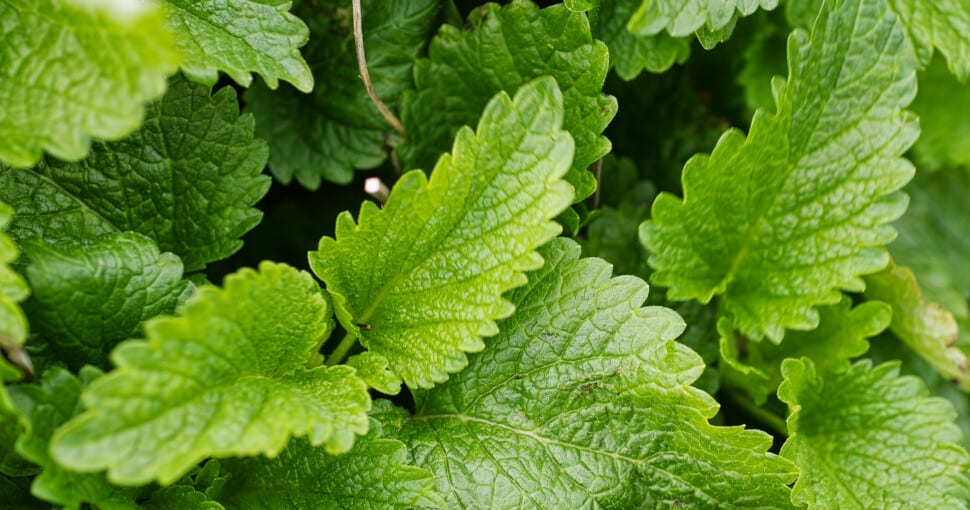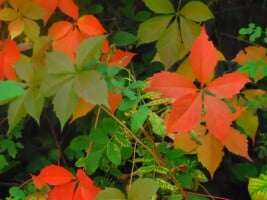Lemon balm is one of more than seven thousand species in the mint plant family (Lamiaceae). Lemon balm is also called bee balm or honey plant. If you wish to attract bees to your garden, lemon balm is a go-to plant to help achieve that. The affinity between bees and lemon balm runs deep. Lemon balm is even named Melissa, which in Greek means honey bee.
Contents
Lemon balm (Melissa officinalis) may be native to Europe, Asia, Iran, and the Mediterranean, but it has spread to gardens worldwide. This popular herb has been used and written about by many cultures for over two thousand years.
Lemon balm grows as a perennial herb and can live as long as ten years. It may die back in winter in cooler climates but will bounce back in spring to reward the grower with a bushy plant that grows to almost forty inches tall.
Lemon balm leaves are bright green and appear rough because of the leaf’s veins. The leaf shape is heart-shaped or cordate, and the edges are toothed. Lemon balm leaves can range in size between one and three inches and are covered with soft hairs. Rubbing the lemon balm leaf will release a lovely citrusy aroma.
All plants in the mint plant family have square stems, and lemon balm is no exception. While most varieties of lemon balm have plain green leaves, there are also variegated varieties with yellow and green leaves. Lemon balm flowers that attract many pollinators are white or pale pink. Many other plants share some of these characteristics. Let’s find out more about them.
1. Red Dead Nettle
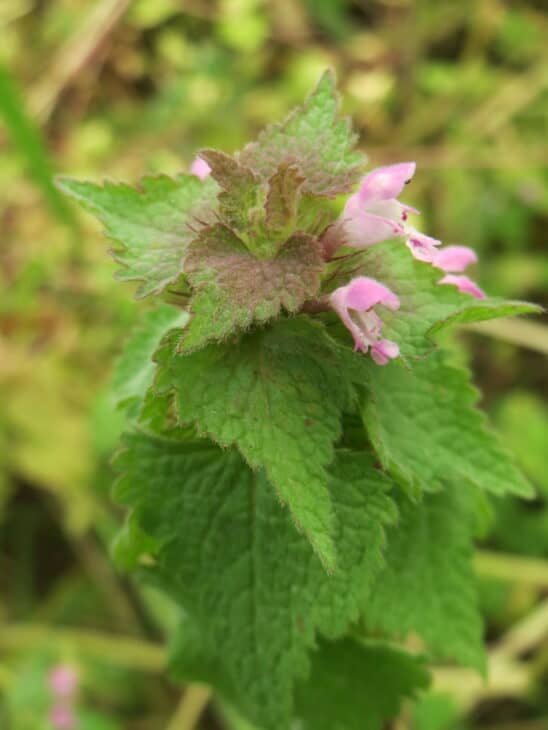
Red dead nettle (Lamium purpureum) also goes by names such as purple dead nettle and purple archangel. This perennial member of the mint family is another bee-friendly plant, just like lemon balm. Red dead nettle plants are a little smaller than lemon balm plants averaging between two and eight inches in height.
Red dead nettle originated in Europe and Asia but is commonly found in almost every continent. Red dead nettle leaves have the same hairy covering and deep-veined texture as a lemon balm but lack the lemon scent when rubbed. The edges of red dead nettle leaves have more rounded scallops and show a purple tinge of color close to the stem end of each leaf.
The light purple tube-like flowers of red dead nettle are a food source for bees year-round in areas that do not get snow. This makes red dead nettle a valuable food source for bees during winter. Like lemon balm, red dead nettle is also used medicinally in folk medicine, usually to stem bleeding externally.
Related: 5 Plants That Look Like Dead Nettle
2. Garden Mint
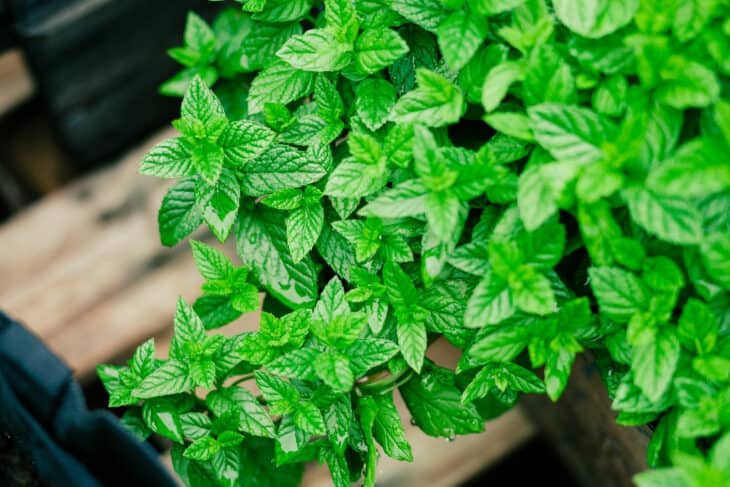
Garden mint (Mentha) is a generalized term for the very aromatic genus of plants that includes around twenty-five species. Garden mint is a member of the Lamiaceae family and has a distinctive minty fragrance. Mint is used extensively in cuisine, traditional medicine, and even as perfume and is found on almost every continent.
Like lemon balm, garden mint and its wide range of varieties are perennial plants that grow between four and forty inches high and spread extensively. Garden mint forms new roots along the square plant stem if the stem makes ground contact. This is called vegetative spread and is the main form of propagation in mint plants. By contrast, Lemon balm usually self-seeds as a way of propagation.
The leaf shape in mint varieties varies widely, but garden mint leaves can look very similar to lemon balm. Garden mint leaves are bright green with strong vein patterns and serrated or toothed edges. The leaves are more lance-shaped than lemon balm, and most varieties lack fine hair covering.
Related: 5 Plants That Look Like Mint
3. Catnip
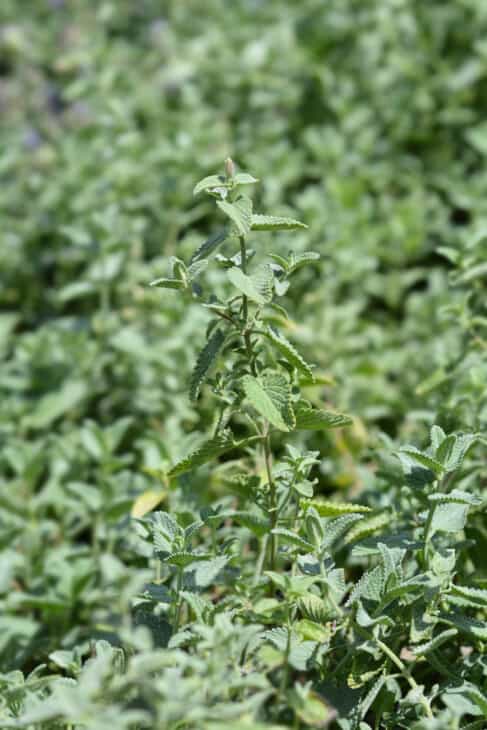
Catnip (Nepeta cataria), also called catmint and catwort, grows as a perennial herb and is a member of the Lamiaceae family. Catnip is native to Europe, Asia, China, and the Middle East, but this popular pet herb has become naturalized in many other countries.
Like lemon balm, catnip grows to around forty inches high, but catnip plants do not live as long as lemon balm. Catnip leaves have a clear vein pattern visible with a fine hair covering on the upper and lower side of the leaf. Catnip leaves have serrated edges and a similar color to lemon balm. Catnip leaves are slightly more triangular than lemon balm leaves, though.
Catnip is not only good for your feline friends. Catnip is also a bee and butterfly-friendly plant, providing flowers high in nectar yield from spring through to fall. Flowers range from white with purple markings to purple in color. Catnip tea is also calming for humans and reportedly helps with indigestion, stomach cramps, and fevers.
4. Lemon Frost Spotted Dead Nettle
Lemon frost dead nettle (Lamium maculatum ‘Lemon Frost’) is a cultivated variety of dead nettle with lemon and lime green colored foliage. Lemon frost dead nettle is similar to the lemon balm All Gold variety.
The heart-shaped or cordate leaf form or lemon frost spotted dead nettle is similar to the All gold lemon balm. The leaves of both these plants have rounded toothed edges and a coarse appearance due to the vein patterns.
Lemon frost dead nettle grows roughly six inches tall and spreads vigorously via rhizomes. It grows well in partial sun or in the shade. By contrast, lemon balm grows up to three feet tall and forms clumps. Both plants attract bees and butterflies to the garden with lavender-colored flowers. Lemon frost dead nettle blooms from spring through fall.
Like lemon balm, lemon frost dead nettle is long-lived, with a life span of around ten years.
5. Small-Flowered Melissa
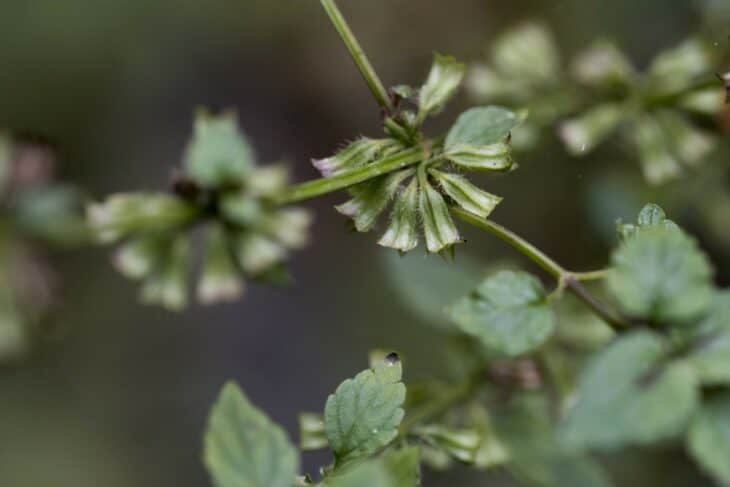
The small-flowered Melissa (Melissa Axillaris) belongs to the Lamiaceae plant family and is from the same genus as lemon balm. Small-flowered Melissa plants can reach a height of three feet like regular lemon balm, but the plant appears more sprawling with fewer leaves.
Small-flowered Melissa leaves have the same shape and texture as lemon balm, but the leaves are only a third of the size. Small-flowered Melissa leaves also have a purple coloration on the underside of the leaf which is lacking in lemon balm.
The color of small-flowered Melissa flowers differs from lemon balm, ranging from white to pale yellow with occasional purple markings. Both plants produce plenty of nectar to attract insects to the garden.
Small-flowered Melissa is quite common in its native regions of Nepal, China, Burma, and India but has only recently been brought to other regions of the globe as a collector’s plant or for its medicinal properties.
6. Variegated Pineapple Mint
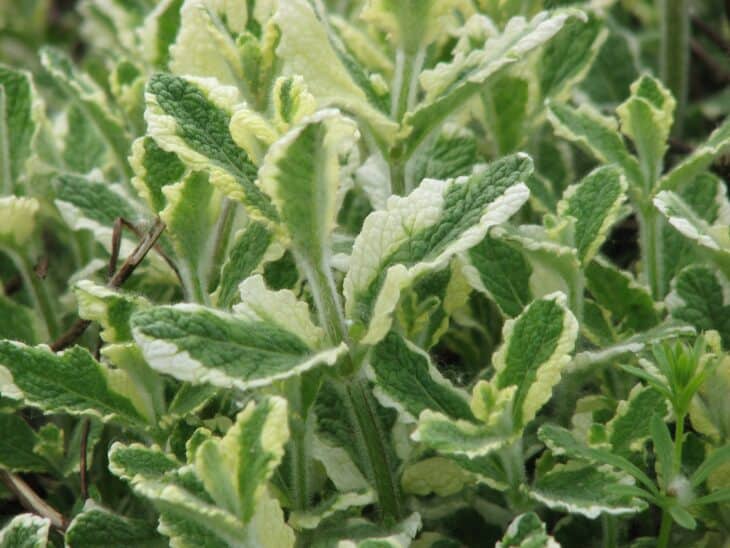
This variegated mint variety (Mentha suaveolens ‘Variegata’) is a look-alike plant of the variegated lemon balm plant. Sometimes called apple mint or woolly mint, the variegated pineapple mint grows more than three feet tall and has runners that spread indefinitely.
Variegated mint is native to Europe but has spread around the globe to herb gardens or for use as a landscape plant. The color of variegated mint leaves ranges from white to cream, combined with bright green. Variegated lemon balm leaves have similar coloration and are slightly larger than variegated mint.
As the name woolly mint indicates, the leaves of this mint plant have a fine hair covering, the same as lemon balm does. The purple flowers formed in summer attract many pollinators and hummingbirds to the garden.
Variegated mint has a more fruity taste profile than regular mint and is an ideal addition to juices, for use in mint jelly, or as an ingredient in potpourri.

